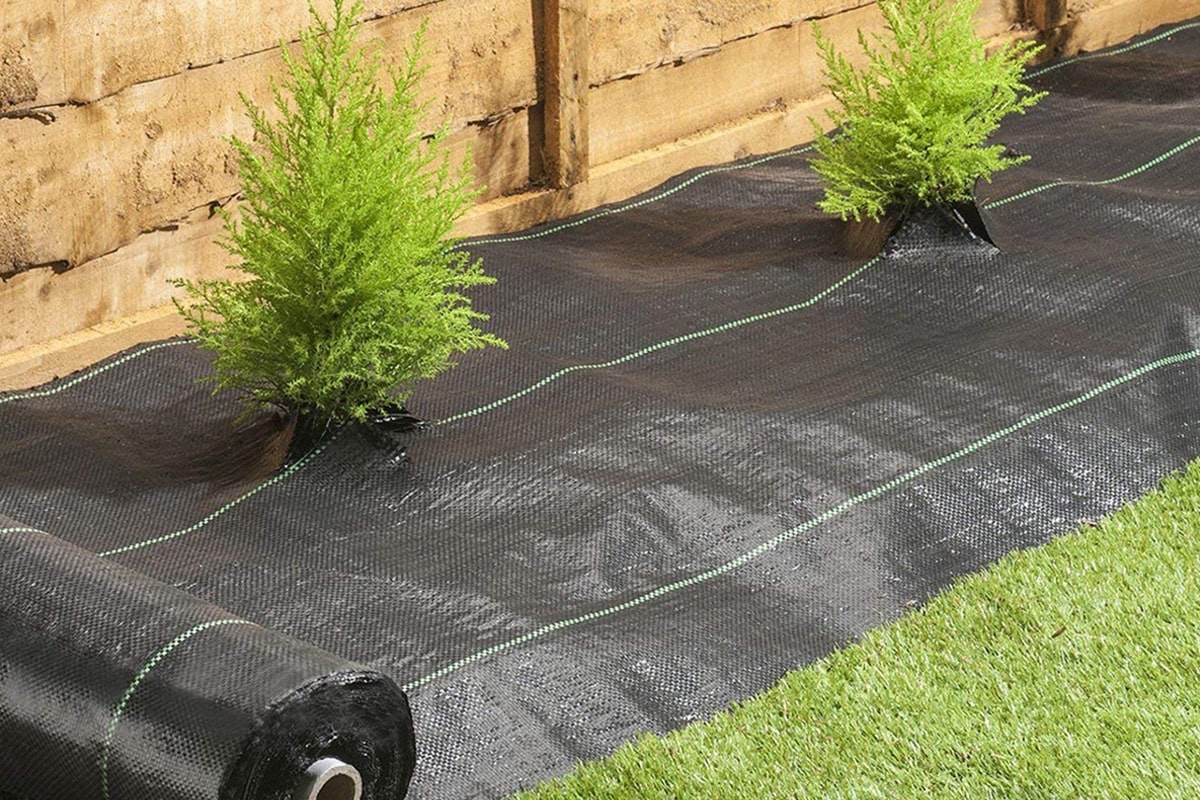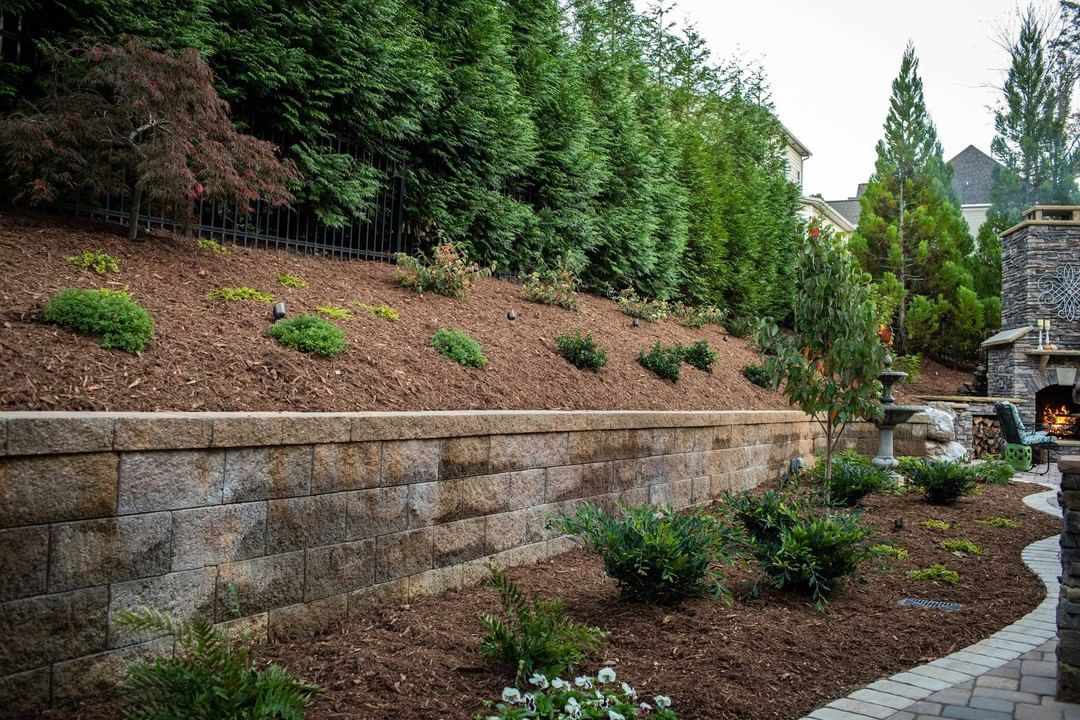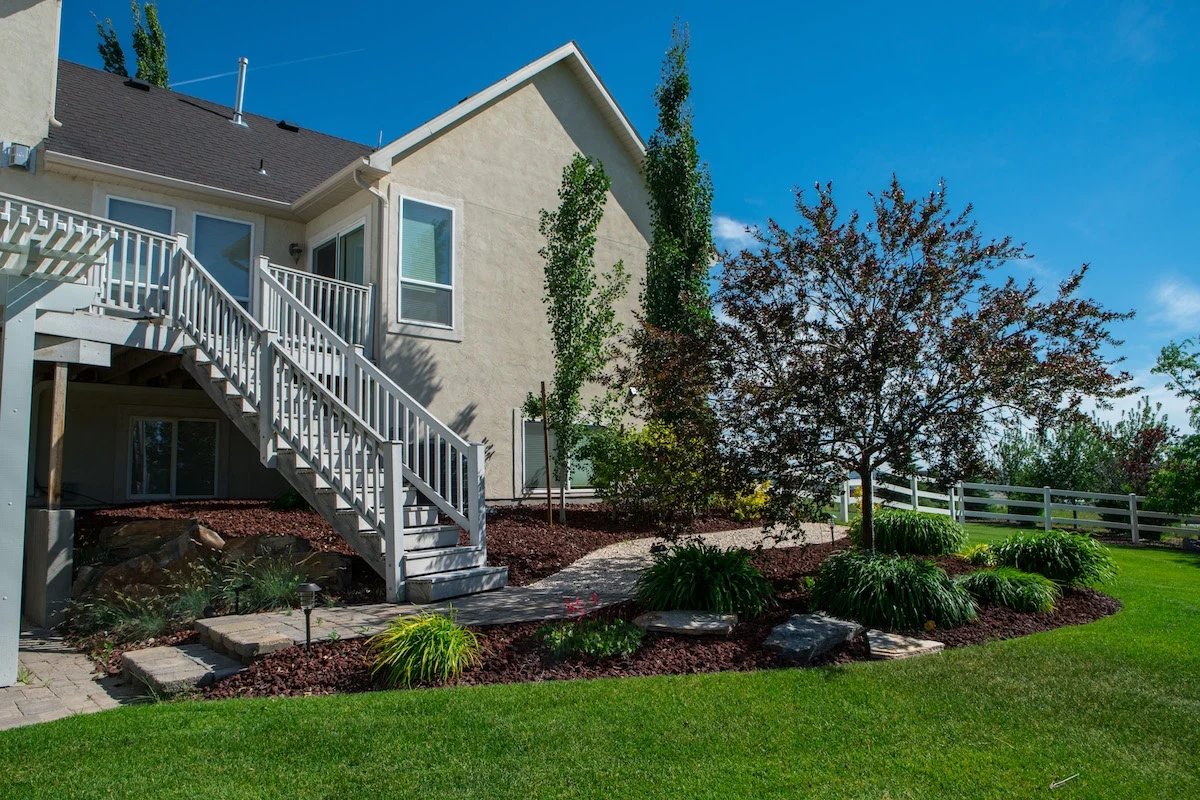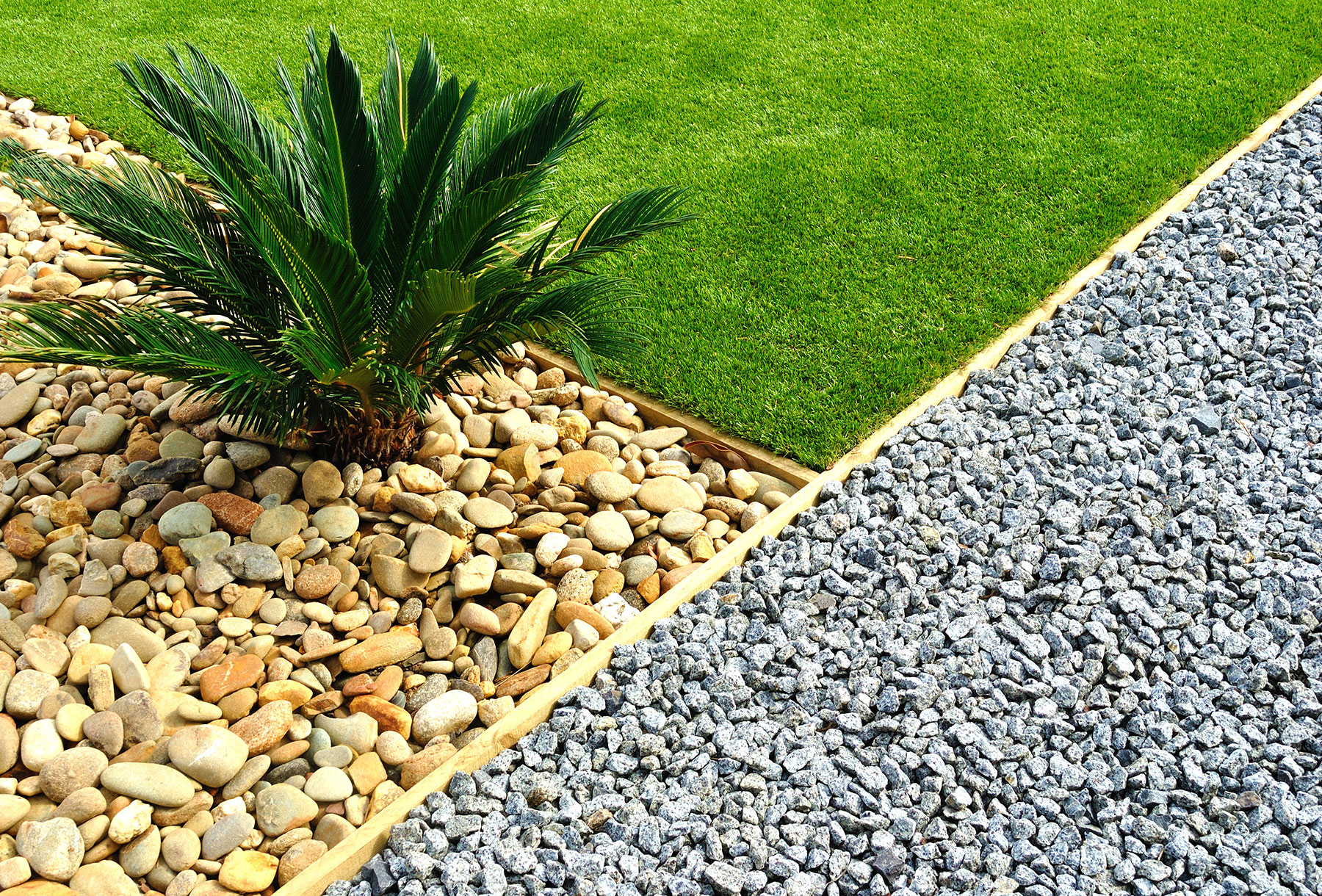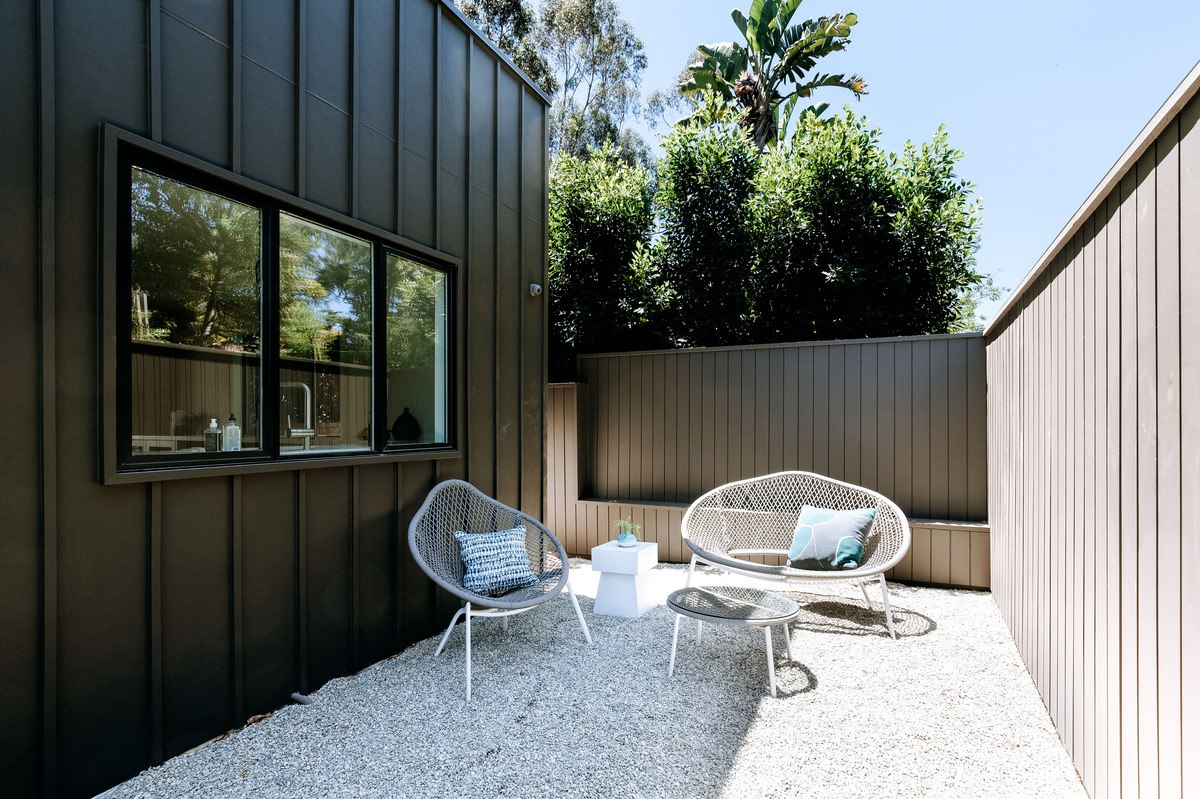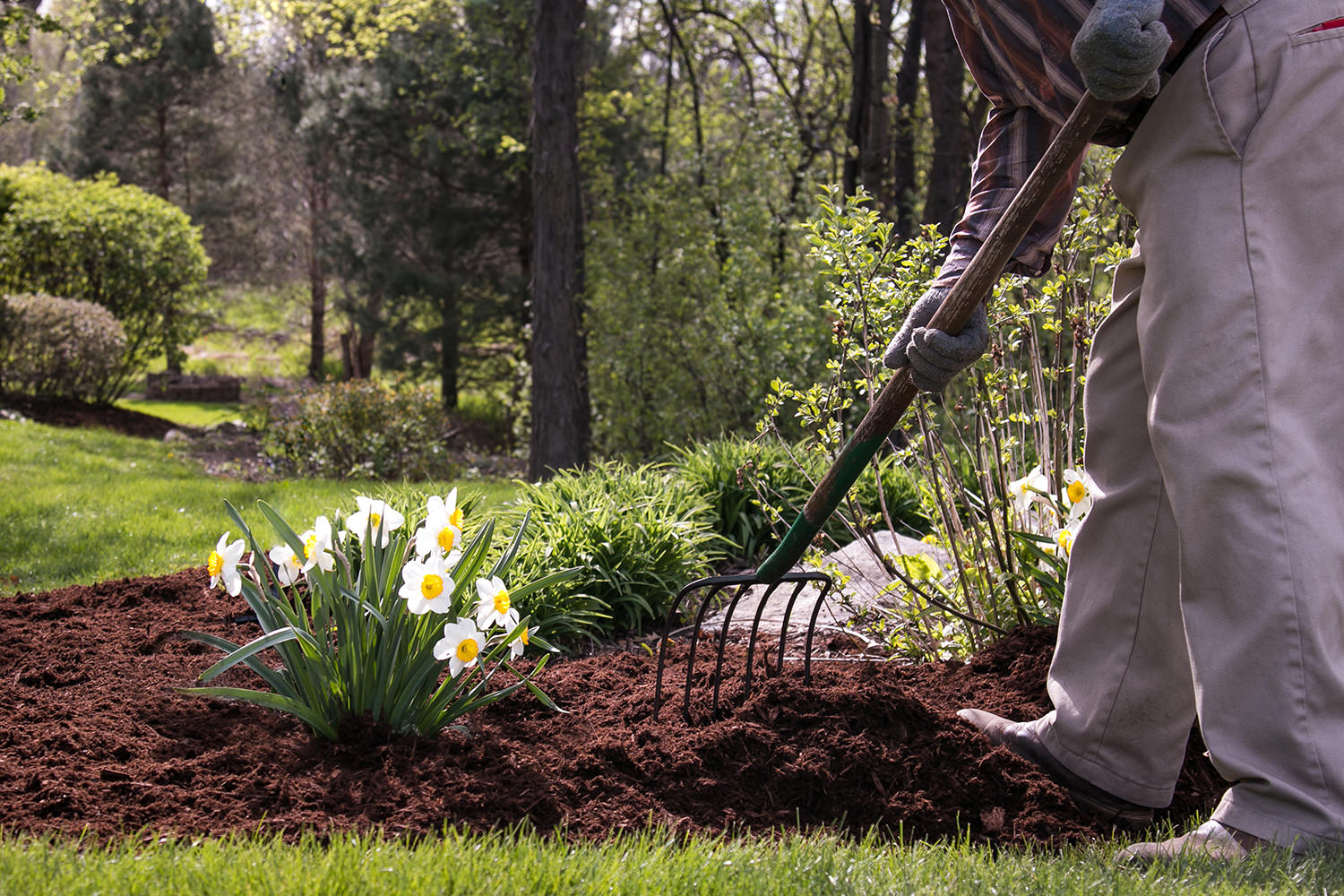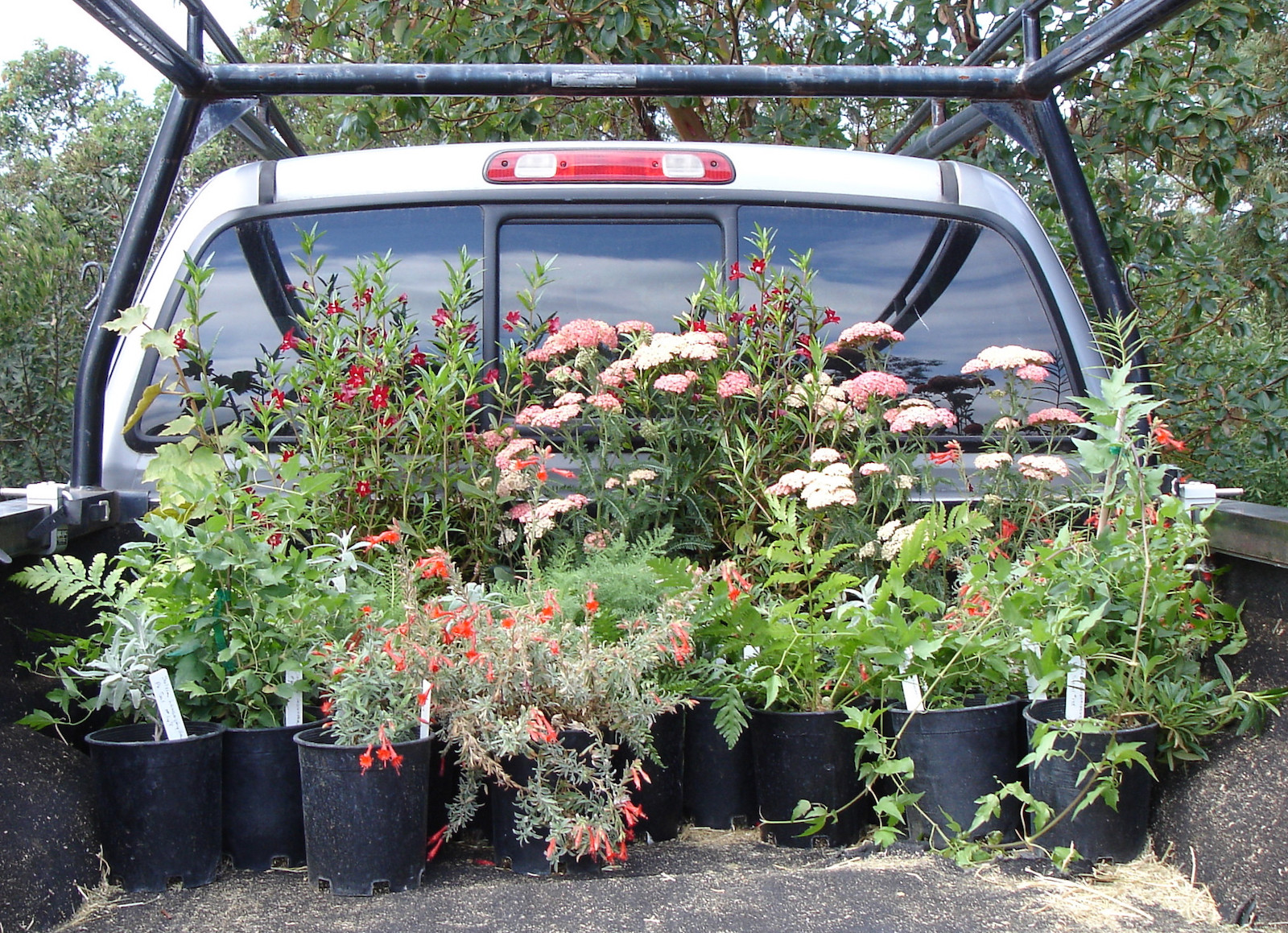Home>Gardening News and Trends>Latest News>What Is Landscaping
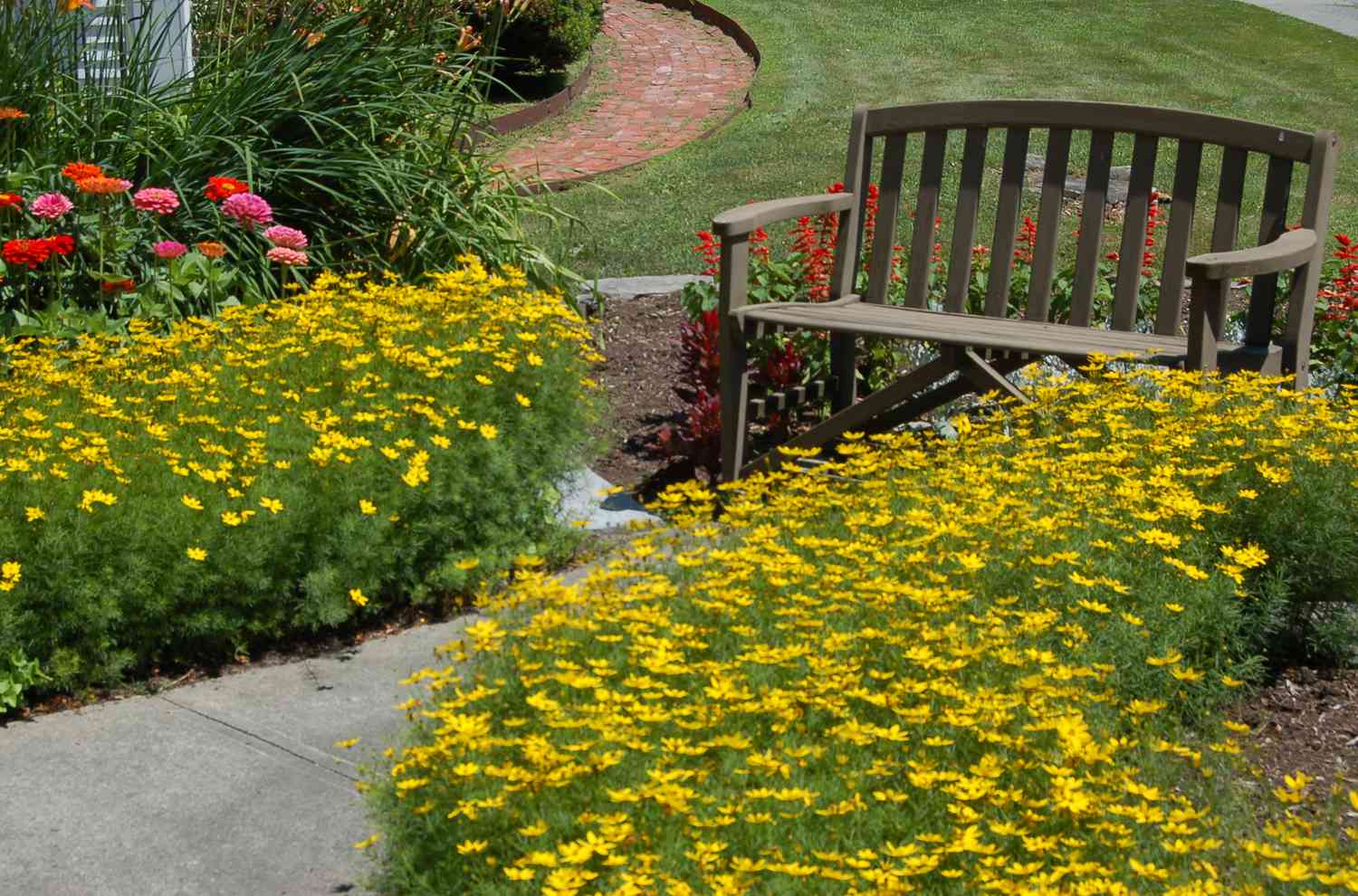

Latest News
What Is Landscaping
Modified: January 22, 2024
Discover the Latest News in Landscaping
(Many of the links in this article redirect to a specific reviewed product. Your purchase of these products through affiliate links helps to generate commission for Chicagolandgardening.com, at no extra cost. Learn more)
Table of Contents
Introduction
Welcome to the world of landscaping, where creativity meets nature to transform outdoor spaces into stunning and functional environments. Landscaping involves the art and science of designing, planning, and creating visually appealing and sustainable outdoor areas. Whether it’s a small backyard or a sprawling estate, landscaping offers endless possibilities to enhance the beauty and functionality of any space.
Landscaping is more than just planting a few flowers or mowing the lawn. It’s about harnessing the natural elements and using them to create a harmonious and inviting outdoor oasis. From selecting the right plants to incorporating hardscape features, landscaping involves careful consideration of various elements to achieve the desired results.
With a well-designed landscape, you can create an outdoor retreat that not only complements your home but also provides a space for relaxation, entertainment, and connection with nature. A thoughtfully landscaped yard can significantly increase the value of your property, improve curb appeal, and create an inviting and welcoming atmosphere for you, your family, and your guests.
In this article, we will explore the world of landscaping in depth, covering everything from the definition and importance of landscaping to the different types of techniques and tools used in the process. Whether you are a homeowner looking to spruce up your yard or a landscaping enthusiast seeking inspiration, this comprehensive guide will provide you with the knowledge and insights you need.
So, grab your gardening gloves and let’s dive into the exciting and transformative world of landscaping!
Definition of Landscaping
Landscaping refers to the process of modifying, designing, and creating outdoor spaces to enhance their aesthetic appeal, functionality, and overall quality. It is the art of shaping and arranging different elements such as plants, hardscape features, water elements, and lighting to create visually pleasing and functional outdoor environments. The goal of landscaping is to transform ordinary spaces into captivating and sustainable landscapes that not only beautify but also serve specific purposes.
Landscaping is a multi-faceted discipline that involves careful consideration of various factors, including natural elements, climate, topography, and the desired style or theme. It requires a combination of artistic vision, technical knowledge, and practical skills to create harmonious outdoor spaces that blend seamlessly with the natural surroundings.
One of the key aspects of landscaping is the use of plants. Landscapers carefully select and arrange a variety of plants, including trees, shrubs, flowers, and grasses, to create depth, texture, and color in the landscape. The choice of plants depends on factors such as the location’s climate, soil type, and the desired maintenance level. Additionally, hardscape elements such as pathways, patios, decks, and retaining walls are often incorporated to provide structure and functionality to the overall design.
Landscaping is not limited to residential properties. It is also extensively used in commercial and public spaces, such as parks, gardens, office complexes, and shopping centers, to enhance the overall ambiance and create a welcoming environment for visitors.
Overall, landscaping is a creative and dynamic process that involves transforming outdoor spaces into visually appealing and functional landscapes. It combines art, science, and practicality to create outdoor environments that reflect the personality and preferences of the property owner while integrating harmoniously with the natural elements around them.
The Importance of Landscaping
Landscaping plays a crucial role in enhancing the overall aesthetics, functionality, and value of a property. Beyond the visual appeal, landscaping offers numerous benefits that extend to both the property owner and the environment. Let’s explore the importance of landscaping in more detail.
1. Curb Appeal: Landscaping significantly contributes to the curb appeal of a property. A well-designed and maintained landscape creates a positive first impression and can greatly increase the attractiveness and value of a home or business. It sets the stage for a warm welcome and creates a visually pleasing environment that can be enjoyed by both residents and visitors.
2. Environmental Benefits: Landscaping plays a vital role in promoting environmental sustainability. Trees, plants, and grass help to improve air quality by absorbing pollutants and producing oxygen. They also act as natural coolants, reducing the heat island effect in urban areas. Additionally, a well-designed landscape can help to control soil erosion, filter rainwater runoff, and provide habitat for beneficial wildlife.
3. Enhanced Livability: Landscaping creates a space for relaxation, recreation, and enjoyment. A thoughtfully designed yard can provide areas for outdoor activities, such as gardening, barbecues, and family gatherings. It offers an escape from the hustle and bustle of daily life, providing a peaceful retreat where one can connect with nature and recharge.
4. Increased Property Value: A well-maintained landscape can significantly increase the value of a property. Studies have shown that homes with professionally designed landscapes can have a higher resale value compared to those without. Landscaping adds curb appeal, charm, and desirability to a property, making it more attractive to potential buyers.
5. Health and Well-being: Spending time in nature has been proven to have numerous health benefits. Landscapes that incorporate green spaces, gardens, and natural elements provide opportunities for relaxation, stress reduction, and improved mental well-being. Furthermore, engaging in outdoor activities and gardening can promote physical activity and contribute to a healthier lifestyle.
6. Energy Efficiency: Properly selected and placed trees and plants can provide shade and act as natural insulation, reducing the need for excessive air conditioning during hot summer months. This can lead to energy savings and lower utility bills.
From enhancing the visual appeal of a property to promoting environmental sustainability and improving overall well-being, landscaping offers a wide range of benefits. It is an investment that pays off in the form of increased property value, enjoyment, and connection with nature. Whether it’s a small backyard garden or a large commercial space, landscaping can transform any outdoor area into a beautiful and functional oasis.
Elements of Landscaping
Landscaping is a complex and multifaceted discipline that involves the careful arrangement of various elements to create a harmonious and visually appealing outdoor space. These elements work together to bring balance, functionality, and beauty to the landscape. Let’s explore the key elements of landscaping:
1. Plants: Plants are the backbone of any landscape design. They provide color, texture, and scale to the outdoor space. From trees and shrubs to flowers and groundcovers, the selection and arrangement of plants depend on factors such as climate, soil type, and maintenance requirements. Different types of plants are used to create focal points, provide privacy, or add seasonal interest to the landscaping.
2. Hardscape: Hardscape elements refer to the non-living features of a landscape. This includes pathways, patios, decks, fences, walls, and other structures made from materials such as concrete, brick, stone, or wood. Hardscape elements add structure, functionality, and definition to the landscape design, creating areas for seating, entertaining, and movement.
3. Water Elements: Water features such as ponds, fountains, waterfalls, and streams add a soothing and tranquil element to the landscape. They provide visual interest, attract wildlife, and create a relaxing ambiance. Water elements can be incorporated into both residential and commercial landscapes, adding a touch of elegance and serenity.
4. Lighting: Proper lighting is essential to highlight and enhance the beauty of the landscape, as well as provide safety and security during nighttime. Outdoor lighting fixtures such as path lights, spotlights, and wall sconces can be strategically placed to accentuate architectural features, illuminate walkways, and create a warm and inviting atmosphere after sunset.
5. Color and Texture: The use of color and texture in landscaping is crucial for creating visual interest and depth. A combination of plants with different bloom colors, leaf textures, and heights adds vibrancy and variety to the landscape. Incorporating elements like rocks, gravel, or ornamental grasses can enhance the texture and create focal points.
6. Unity and Harmony: Achieving unity and harmony in the landscape is about creating a cohesive and balanced design. It involves considering the relationship between various elements, such as the size and scale of plants in relation to the built environment, and ensuring that there is a sense of flow and continuity throughout the landscape.
By carefully considering and incorporating these key elements into the landscape design, landscapers can create visually stunning and functional outdoor spaces. Each element plays a crucial role in transforming an ordinary yard into a captivating and harmonious landscape that is both inviting and enjoyable.
Different Types of Landscaping
Landscaping is a versatile discipline that encompasses a wide range of styles and approaches. Each type of landscaping has its own unique characteristics and design principles. Let’s explore some of the most popular types of landscaping:
1. Formal Landscaping: Formal landscaping is characterized by structured and symmetrical designs. It often features geometric shapes, neatly trimmed hedges, and precisely arranged plants. Formal gardens are meticulously maintained and evoke a sense of elegance and order. This style is commonly seen in palaces, estates, and high-end residential properties.
2. Informal Landscaping: Informal landscaping, also known as naturalistic or cottage style, embraces a more relaxed and casual approach. This type of landscaping focuses on creating a natural and organic feel, with curved pathways, meandering borders, and a mix of plantings that mimic the randomness of the natural environment. Informal landscaping is often seen in rural, countryside settings.
3. Contemporary Landscaping: Contemporary landscaping is characterized by its sleek and minimalist design. It emphasizes clean lines, open spaces, and a harmonious integration of indoor and outdoor living. The use of modern materials such as glass, concrete, and metal is common in contemporary landscapes, creating a sense of sophistication and simplicity.
4. Tropical Landscaping: Tropical landscaping is all about creating lush, vibrant, and exotic outdoor environments. It typically features a variety of tropical plants with large, bold leaves and vibrant flowers. Palm trees, ornamental grasses, and water elements are often incorporated to evoke a tropical paradise feel. Tropical landscaping is commonly found in regions with warm climates.
5. Desert Landscaping: Desert landscaping, also known as xeriscaping, is designed to thrive in arid and drought-prone regions. It focuses on water conservation and utilizes plants and design elements that can withstand dry conditions. Desert landscapes often incorporate succulents, cacti, rocks, and gravel to create a low-maintenance and sustainable outdoor space.
6. Japanese Zen Garden: Japanese Zen gardens, also known as rock gardens, are designed to promote tranquility and meditation. They feature carefully raked gravel, large rocks, and minimalistic plantings. These gardens often have a simple and serene layout to encourage contemplation and a sense of harmony with nature.
7. Eclectic Landscaping: Eclectic landscaping incorporates a mix of different styles, elements, and plants to create a personalized and unique outdoor space. This approach allows for creative freedom and the ability to blend various design principles and elements that appeal to the property owner’s taste and preferences.
Each type of landscaping mentioned above offers a distinct aesthetic and ambiance. The choice of landscaping style depends on factors such as personal preferences, regional climate, property size, and architectural style. By understanding the different types of landscaping, homeowners and landscapers can choose the style that best suits their vision and create outdoor spaces that are both visually appealing and functional.
Landscaping Techniques and Tools
Landscaping involves various techniques and tools that help in the planning, design, and implementation of a successful landscape project. These techniques and tools are essential for creating and maintaining beautiful and functional outdoor spaces. Let’s explore some of the key techniques and tools used in landscaping:
1. Site Analysis: Before starting any landscaping project, a thorough site analysis is conducted. This involves assessing the soil type, topography, drainage, and sunlight exposure of the area. It helps landscape professionals determine the suitability of plants, identify potential challenges, and make informed decisions during the design and implementation process.
2. Design Principles: Landscaping incorporates various design principles to create visually appealing and cohesive outdoor spaces. Some common design principles include balance, proportion, focal points, unity, and rhythm. These principles guide the arrangement of plants, hardscape elements, and other features to create a harmonious and balanced overall design.
3. Plant Selection and Installation: Proper plant selection is crucial for a successful landscape. Landscape professionals consider factors such as local climate, soil conditions, maintenance requirements, and the desired aesthetic to choose the right plants for the project. Techniques such as proper spacing, soil preparation, and correct planting methods are employed to ensure the health and longevity of the chosen plants.
4. Irrigation Systems: Effective irrigation is essential for maintaining healthy plants and conserving water. Various irrigation techniques, such as drip irrigation or sprinkler systems, are employed based on the specific needs of the landscape. Additionally, smart irrigation controllers and weather sensors can be utilized to optimize water usage and prevent overwatering or underwatering.
5. Pruning and Trimming: Regular pruning and trimming of plants and trees are necessary for maintaining their health, shape, and overall appearance. Techniques such as selective pruning, rejuvenation pruning, and crown thinning are implemented to ensure proper growth and control the size and shape of plants.
6. Hardscape Installation: Installing hardscape elements, such as patios, pathways, or retaining walls, requires specific techniques and tools. Excavation, grading, and leveling are often used to prepare the site, while appropriate tools such as concrete mixers, trowels, and saws are utilized to construct and secure these hardscape features.
7. Maintenance and Lawn Care: Regular maintenance is essential to keep the landscape healthy and vibrant. Lawn care includes techniques such as mowing, fertilizing, aerating, and controlling weeds and pests. Additionally, landscape professionals use tools such as lawn mowers, trimmers, leaf blowers, and spreaders to ensure the proper care and maintenance of the landscape.
Proper implementation of landscaping techniques and the use of appropriate tools are crucial for achieving the desired results. Landscape professionals combine their skills, knowledge, and experience with these techniques and tools to create stunning, functional, and sustainable outdoor spaces.
Benefits of Landscaping
Landscaping offers numerous benefits that extend beyond the visual appeal of outdoor spaces. Whether it’s a residential property, commercial establishment, or public area, a well-designed and maintained landscape can provide a wide range of advantages. Here are some of the key benefits of landscaping:
1. Increased Property Value: Landscaping can significantly enhance the value of a property. A beautifully landscaped yard with a well-maintained lawn, vibrant plants, and appealing hardscape features can create a positive first impression and increase the overall desirability of the property. This, in turn, can lead to a higher resale value and a quicker sale if the property is on the market.
2. Enhanced Aesthetics and Curb Appeal: Landscaping plays a critical role in enhancing the curb appeal of a property. A thoughtfully designed landscape with well-placed plants, harmonious colors, and attractive hardscape features can create an inviting and visually appealing exterior. This not only impresses visitors but also provides a sense of pride and satisfaction for the property owner.
3. Environmental Benefits: Landscaping offers several environmental benefits. Trees and plants help to purify the air by absorbing carbon dioxide and releasing oxygen. They also act as natural filters, capturing dust and pollutants. Additionally, a well-maintained landscape can control erosion, improve soil quality, and reduce water runoff, thus benefiting the local ecosystem.
4. Improved Quality of Life: A well-designed landscape can significantly enhance the quality of life for occupants. Being surrounded by nature and greenery has been proven to reduce stress, improve mental well-being, and promote relaxation. Outdoor spaces created through landscaping provide opportunities for recreational activities, socializing, and connecting with nature, thereby improving overall happiness and well-being.
5. Energy Efficiency: Landscaping can contribute to energy efficiency in various ways. Well-placed trees and shrubs provide shade, reducing the need for excessive air conditioning during hot summer months. Moreover, green roofs and walls can provide insulation, reducing heating and cooling costs. By incorporating these elements into the landscape, property owners can save on energy bills and reduce their carbon footprint.
6. Noise Reduction: Landscaping can act as a natural sound barrier by reducing noise pollution from surrounding areas. Trees, shrubs, and other plants have the ability to absorb and deflect sound waves, creating a quieter and more peaceful environment. This is particularly beneficial in urban areas or properties located near busy roads.
7. Community and Social Benefits: Landscaping has positive impacts on communities and social interactions. Beautifully landscaped public spaces, such as parks and gardens, provide areas for recreation, social gatherings, and community events. They promote community engagement, facilitate social connections, and contribute to the overall well-being and pride of the neighborhood.
From increasing property value and enhancing aesthetics to providing environmental, health, and social benefits, landscaping offers a wide range of advantages. Investing in quality landscape design and maintenance not only enhances the beauty and functionality of outdoor spaces but also improves the overall quality of life for individuals and communities.
Factors to Consider in Landscaping
When it comes to landscaping, several factors need to be considered to ensure a successful and harmonious outdoor space. Each property is unique, and understanding these factors will help guide the design, planning, and implementation of the landscape project. Here are some essential factors to consider in landscaping:
1. Climate and Regional Conditions: The local climate and regional conditions play a significant role in determining which plants and landscape features will thrive in the area. Factors such as temperature range, rainfall levels, humidity, and wind patterns should be considered when selecting plants and designing the landscape to ensure their long-term survival and health.
2. Site Conditions: Understanding the site conditions is crucial in landscaping. Factors like topography, soil type, drainage, and existing vegetation will influence the design and installation of the landscape. Proper soil testing, site analysis, and assessment of sunlight exposure are essential for selecting suitable plants, determining irrigation needs, and planning the layout of hardscape features.
3. Property Size and Layout: The size and layout of the property are important considerations in landscaping. The available space will determine the scale of the design and the number of elements that can be incorporated. A smaller property may require careful planning to maximize the use of space, while a larger property may offer more opportunities for expansive gardens, outdoor living areas, or recreational spaces.
4. Style and Theme: The desired style or theme of the landscape is an important factor to consider. Whether it’s a formal, informal, contemporary, or themed design, the style should align with the architecture of the property and reflect the preferences and personality of the property owner. Consistency in design elements and materials will create a cohesive and unified outdoor space.
5. Maintenance Level: The maintenance level desired should also be considered in landscaping. Some people prefer low-maintenance landscapes with minimal upkeep, while others enjoy more involved gardening activities. The selection of plants, irrigation systems, and hardscape features should be based on the desired maintenance level to ensure the long-term sustainability and enjoyment of the landscape.
6. Budget: The budget is an important factor to consider in landscaping. Establishing a realistic budget will help determine what can be achieved in terms of plant selection, hardscape materials, and additional features. It’s important to allocate funds for ongoing maintenance to keep the landscape looking its best.
7. Functionality and Purpose: Understanding the intended functionality and purpose of the outdoor space is essential. Whether it’s creating a space for relaxation, entertaining guests, gardening, or accommodating specific activities, incorporating the right elements such as seating areas, outdoor kitchens, or play areas is crucial to ensure the space meets the needs and desires of the property owner.
Considering these factors in landscaping projects will help create a design that is tailored to the unique characteristics and requirements of the property. By carefully assessing climate, site conditions, property size, style preferences, maintenance level, budget, and intended functionality, a landscape can be created that not only enhances the beauty of the property but also fulfills the needs and vision of the property owner.
Tips for Successful Landscaping
Creating a successful landscape involves careful planning, attention to detail, and a touch of creativity. Whether you’re a homeowner tackling a DIY project or working with a professional landscaper, here are some tips to ensure a successful landscaping endeavor:
1. Define Your Needs and Vision: Before starting any landscaping project, clearly define your needs, desires, and vision for the space. Determine the purpose of the outdoor area, such as relaxation, entertaining, or gardening, and create a list of must-have features or elements that align with your vision.
2. Consider the Site and Climate: Take into account the specific site conditions, such as soil type, topography, and sunlight exposure. Additionally, consider the climate of your region and choose plants that are suitable and resilient in the given conditions. By working with the natural elements of the site, you can create a landscape that thrives with minimal effort.
3. Plan for Functionality: Ensure that the landscape design is not only aesthetically pleasing but also functional. Consider how you will use the space and plan accordingly. Incorporate areas for seating, dining, and entertaining. Create designated spaces for specific activities, such as gardening zones or play areas for children.
4. Choose Suitable Plants: Select plants that are well-suited to your climate, soil conditions, and maintenance abilities. Consider factors such as plant size, growth rate, and seasonal interest. Create a balance between evergreen and seasonal plants to ensure year-round appeal. Additionally, group plants with similar water and sunlight requirements to simplify maintenance.
5. Prioritize Soil Health: Healthy soil is the foundation for a thriving landscape. Test your soil to determine its pH level and nutrient content. Make any necessary amendments, such as adding organic matter or fertilizers, to ensure optimal plant growth. Regularly monitor soil moisture levels and provide adequate water to prevent under or overwatering.
6. Incorporate Hardscape Elements: Integrate hardscape elements, such as pathways, patios, or retaining walls, into your landscape to add structure and functionality. Choose materials that complement the style of your home and the overall aesthetic of the landscape. Ensure proper installation techniques to ensure durability and longevity.
7. Consider Maintenance Requirements: Be realistic about your commitment to landscape maintenance. Take into account the time, effort, and resources required to maintain the landscape. Choose plants and features that align with your desired maintenance level. Consider low-maintenance options, such as native plants or automated irrigation systems, to minimize the amount of time and effort spent on upkeep.
8. Choose Quality Over Quantity: It’s better to have a well-designed and maintained landscape with quality elements than a crowded and unkempt space. Focus on selecting a few standout plants, properly placed hardscape features, and well-defined areas rather than overcrowding the space. This will create a more visually appealing and manageable landscape.
9. Seek Professional Help When Needed: If you’re unsure about design decisions or lack the time and expertise, don’t hesitate to seek professional help. Landscape architects or designers can provide valuable insights and expertise to help bring your vision to life. They have the knowledge and experience to create well-planned and visually stunning landscapes.
10. Regular Maintenance: Regular maintenance is crucial to keep your landscape in top shape. This includes tasks such as mowing, pruning, fertilizing, and weeding. Develop a maintenance schedule and diligently follow it to ensure the long-term health and beauty of your landscape.
By following these tips, you can set yourself up for a successful landscaping project. Remember to plan, consider the site conditions, choose suitable plants, prioritize functionality, and maintain your landscape regularly. With careful attention and thoughtful execution, you can create a beautiful and thriving outdoor space that adds value and enjoyment to your home or property.
Conclusion
Landscaping is a holistic and creative process that transforms outdoor spaces into beautiful, functional, and sustainable environments. Whether you’re aiming to enhance the curb appeal of your home, create a tranquil oasis, or design a welcoming public space, landscaping offers endless possibilities to bring your vision to life. By considering factors such as climate, site conditions, style preferences, and desired functionality, you can design a landscape that suits your needs and complements the natural elements of your surroundings.
From the selection and arrangement of plants to the incorporation of hardscape elements, water features, and lighting, landscaping combines artistry, technical skill, and practical knowledge. It creates outdoor spaces that are not only visually appealing but also offer numerous benefits. Landscaping increases property value, improves environmental sustainability, supports physical and mental well-being, and fosters a sense of community.
Successful landscaping involves careful planning, attention to detail, and regular maintenance. Consider your specific needs and vision, ensure functionality and practicality, and choose suitable plants and materials. Seek professional help when needed and invest time and effort into regular maintenance to ensure the long-term health and beauty of your landscape.
Remember, landscaping is a personal expression of creativity and a way to connect with nature. Let your imagination soar, and create a landscape that reflects your personality and brings you joy. So, whether you’re embarking on a small DIY project or working with a professional landscaper, embrace the art and science of landscaping to transform your outdoor space into a captivating and inviting sanctuary.
